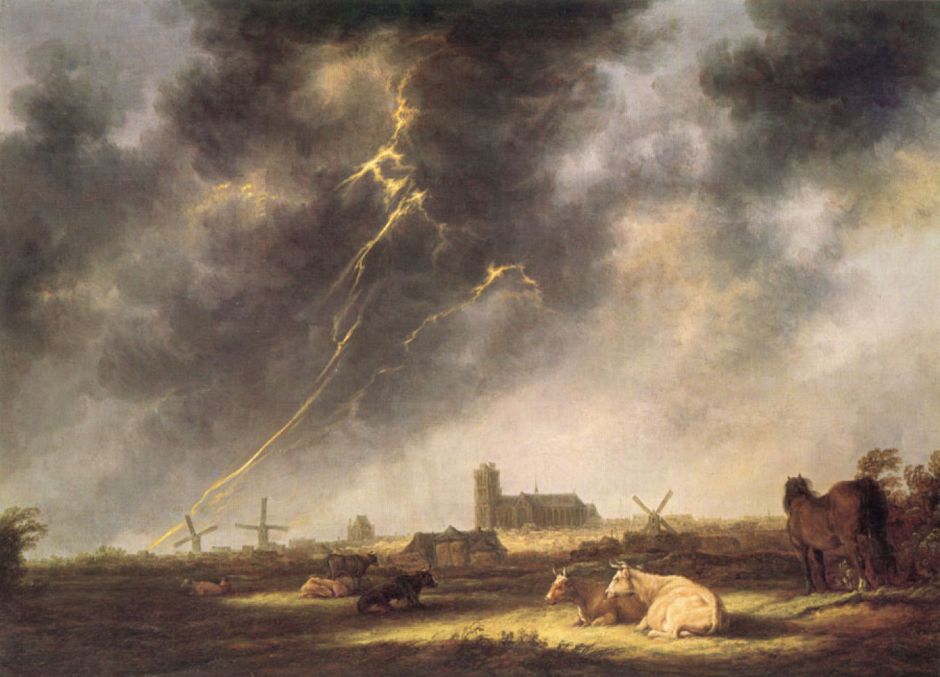On 20 October, we should celebrate the four-hundredth anniversary of the birth of the Dutch Golden Age master Aelbert Cuyp (1620–1691). In this first of a series of three articles about his career and paintings, I look at his early works between 1639-46.
Cuyp was born into an artistic family, who were also quite rich. He was taught to paint by his father, Jacob Gerritsz Cuyp, who was primarily a portrait painter, and lived in Dordrecht, now in the Netherlands. Trained as a landscape painter, he often used views as a platform for genre scenes, animal and human portraits, and more, and seems to have been both happy and highly proficient at painting almost anything.
During this first phase of his career, he was mostly under the influence of the prolific artist Jan van Goyen (1596-1656), but doesn’t appear to have been his pupil.

Cuyp is thought to have painted this Landscape with Cattle when he was only about nineteen, in 1639. It’s set against the background of the city of Dordrecht, the oldest city in the Netherlands, and situated on the Rhine-Meuse-Scheldt river delta. The herdsman and animals in the foreground are engaged in diversions from that landscape: the man is taunting a billy goat, while the cow at the far right is urinating copiously. Above them is a lucent sky with slightly unnatural clouds.

Landscape with Cattle and Figures from about 1640 shows the development of Cuyp’s tonal range and increasing maturity.

Cuyp was soon using his landscapes with more diverse themes. Orpheus with Animals in a Landscape from about 1640 is one of at least two different paintings he made of this story from mythology. Here he has included a wide range of both domestic and exotic animals and birds, including a distant elephant, an ostrich, herons and wildfowl.

Throughout his career, Cuyp seems to have made detailed sketches in front of the motif, to inform his studio paintings. This View of Arnhem from the South from about 1642-46 was made using grey wash, watercolour and black chalk.

His Thunderstorm over Dordrecht from about 1645 is amazingly effective and accurate, considering it was painted more than two centuries before anyone saw high-speed photographic images of lightning.

Many of Cuyp’s landscapes show more varied terrain than he could ever have seen in his homeland. Although the cliffs at the right of his Herdsmen with Cows (c 1645) may have been fairly local, the more substantial crags in the left distance are far from being Dutch. It’s not known whether he travelled to other countries, or perhaps relied on the paintings of artists who did.

His paintings of domestic animals also took him indoors, for example in this fascinating painting of Sheep in a Stable from about 1645. The sheep are faithfully depicted, and surrounded by objects suggesting this was more a still life. In the foreground are empty mussel shells, a couple of earthenware pots, and two wickerwork baskets with some scarlet cloth. He also renders the texture of the fleeces using painterly brushstrokes, particularly that of the standing ram.

View on the Rhine also from about 1645 appears to have been the result of a trip up river, into steeper terrain inland. It is wonderfully sketchy, and might even be mistaken for one of Turner’s landscapes from nearly two centuries later.

Inevitably, many of Cuyp’s finest landscapes show his home city, such as this View of the Maas at Dordrecht from about 1645-46. This uses an extreme panoramic panel very succesfully.
Reference

